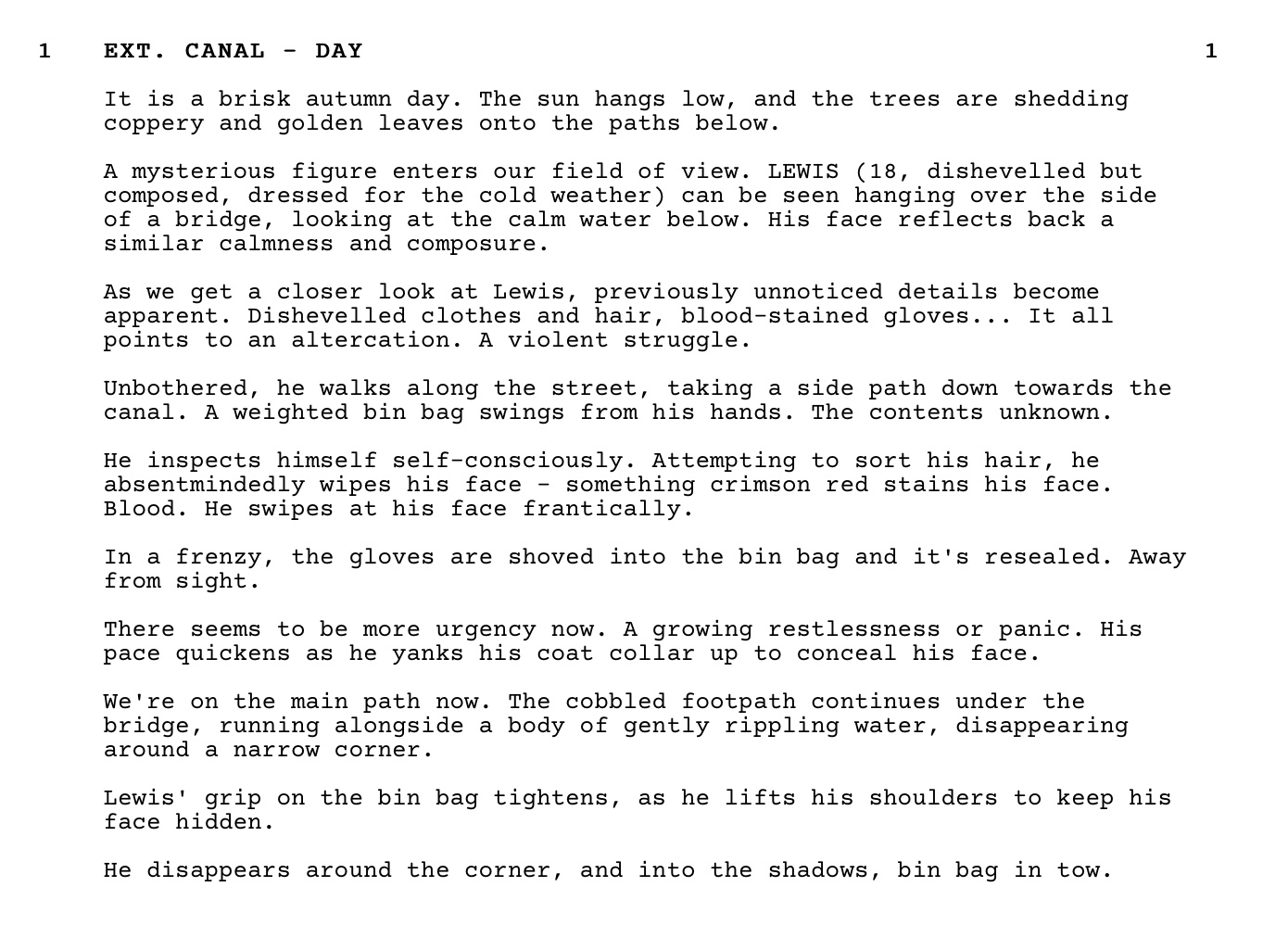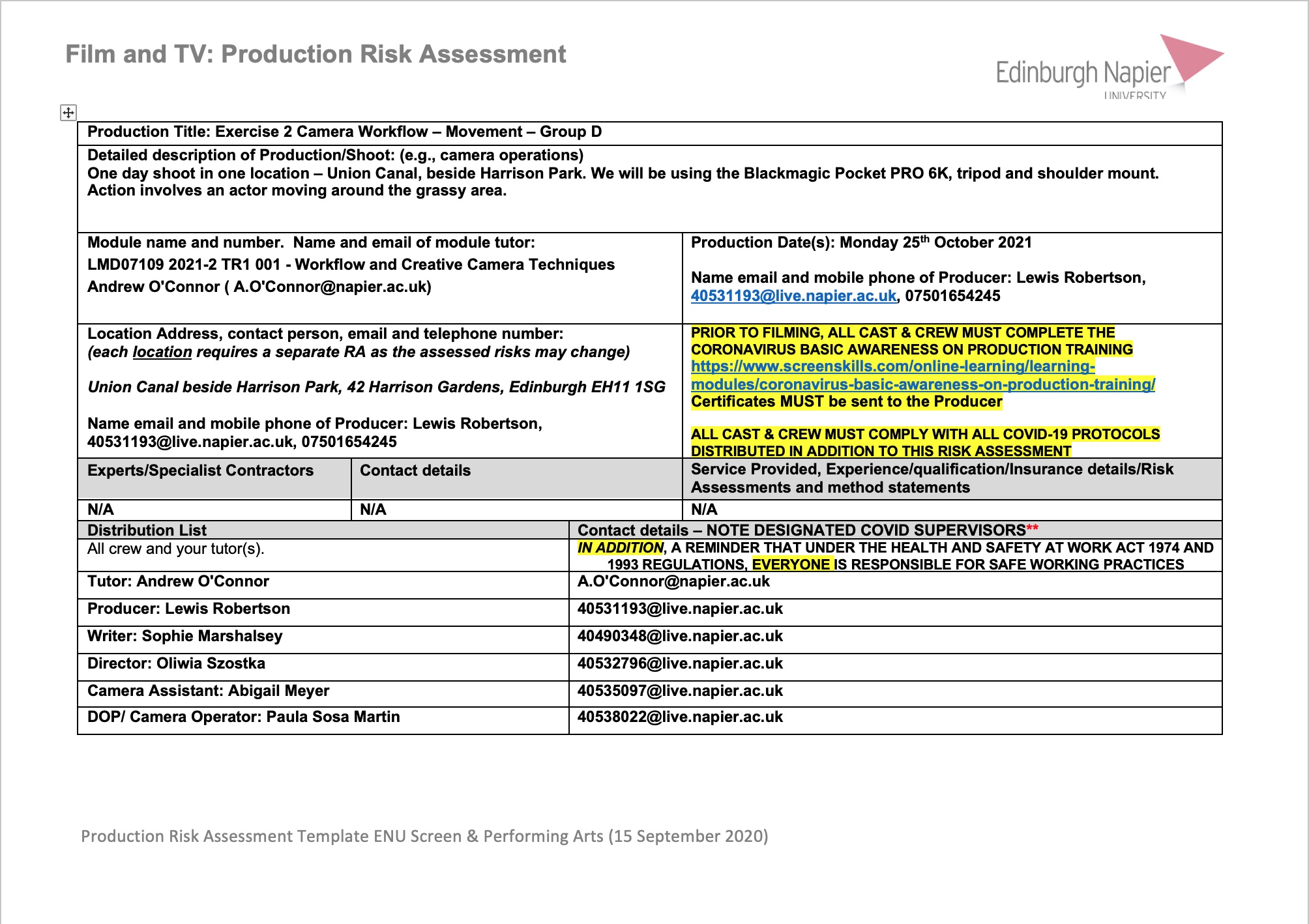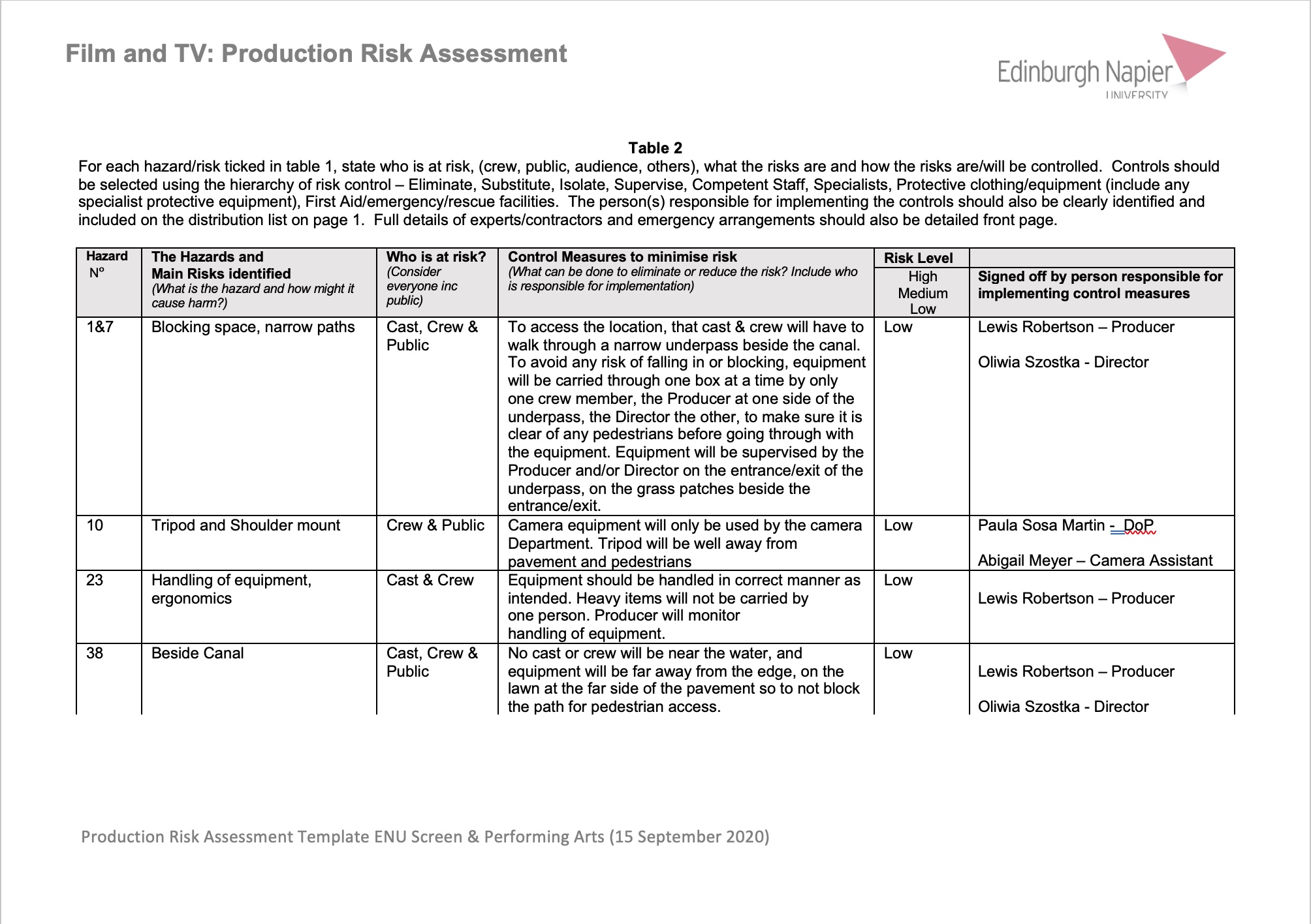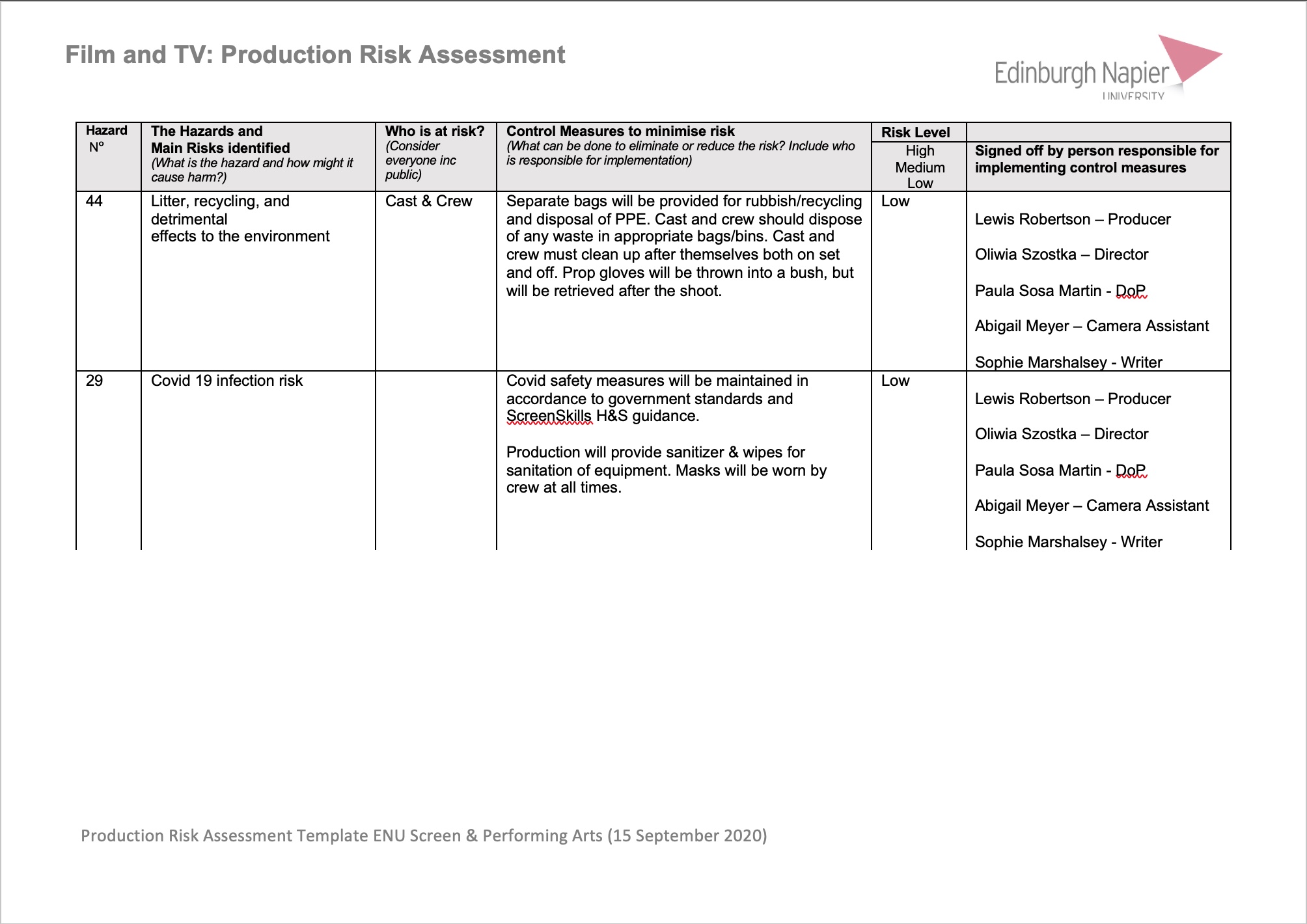Exercise 2
Workflow and Creative Camera TechniquesFor Exercise 2, we were tasked with creating two clips following the same narrative filmed on a tripod and then handheld to see the effects of camera movement. The narrative was to be a one-page scene with a maximum of two characters set in a single location.
We opted for a crime-thriller narrative, but kept our premise simple in order to focus on the movement of the camera. Both clips include our main character looking for a place to dispose of a bin bag as he tries to avoid looking suspicious, to no avail.
As the writer, it was my role to conceptualise an idea, write the script and make any necessary modifications during the various stages of production.
Screenplay

Risk Assessment
Below are the main excerpts from our risk assessment.



Tripod
The version filmed on the tripod was detached, impersonal and objective, as if we are witnessing the event as a pedestrian or passer-by would see it. The atmosphere is still somewhat mysterious and ominous, but lacks the closeness and level of detail offered by the handheld version. The tripod takes away the stylistic element commonplace in crime/thriller films, and flattens out the action and footage. In my opinion, it is too polished and seamless to be effective.
Handheld
The handheld version is far more reflective of the desired effect we were aiming to achieve; it has grit, style and visual imperfections. Actions detailed in the script are far more noticeable in this version, and the overall viewing is subjective as opposed to objective, allowing for greater familiarity to be established with the main character. To me, this version feels like the audience is an accomplice or witness, rather than someone uninvolved observing the events.
Conclusion
Through the exercise, I learnt about the value of camera movement in terms of how it can influence the overall cinematography and tone of a film. With my assigned role as the writer, I also benefitted from applying new knowledge and techniques from a different module within the script – despite it including no dialogue, and being focused entirely on visual storytelling. It emphasised the necessity of clear, to-the-point language and to avoid including details that cannot be shown through film.